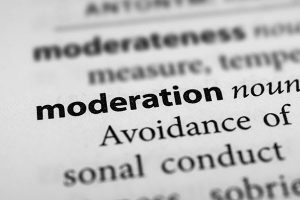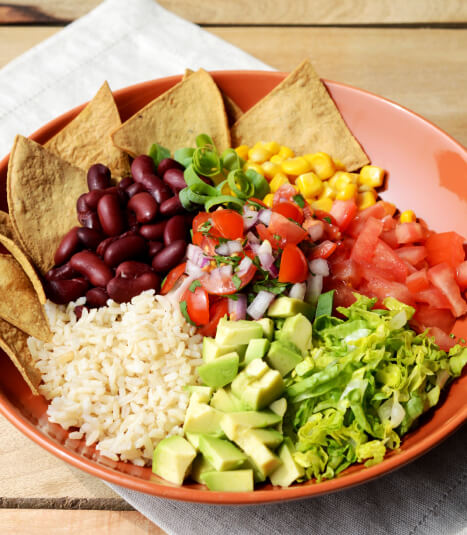New Trans-fat Labels
Updated September 18, 2013
Too Little, Too Late
The federal government formally announced that food labels will be required to disclose the amount of unhealthy trans-fatty acids they contain by January 1, 2006. This means another 60,000 Americans will be at increased risk of dying prematurely before this information is available.1 You don’t have to be one of these victims of ignorance – trans-fats are very easy to avoid. Trans-fats are present in small amounts in meat and dairy products. However, the largest doses of these unhealthy fats come to your dinner plate by way of vegetable oils chemically changed by manufacturers to improve their shelf life and customer appeal. Margarines and shortenings (Crisco) are the predominant sources of these fats – contributing 80% to 90% of the trans-fats in the American diet. These synthetic fats are then used in a great variety of common products such as cookies, crackers, potato and tortilla chips, donuts, crackers, cakes and frostings, baked goods, potpies, non-dairy creamers, pizzas, fish sticks, and French fries. In Britain fish oils are commonly made into trans-fat products.
Unless it is clearly stated to the contrary, assume all boxed, canned and packaged foods that list added fat as an ingredient contain trans-fat. Deceptive labeling saying a product is “Low in Saturated Fat” or “Low in Cholesterol” or “Cooked in Vegetable Oil” will tell you nothing about the kinds of fats, and in fact, products with such labels may be the worst offenders.2 These products may contain up to 35% of their calories as trans-fat. One clue that trans-fats are present is the words “partially hydrogenated oils” found in the ingredient area of the label.
Even with the new labeling laws you still won’t know about the trans-fat foods that are served when you eat in restaurants and fast foods places. These eateries use packaged ingredients containing trans-fats and also deep fry many of their menu items in oils loaded with trans-fats.
What Are Trans-Fats?
Fats and oils differ in that fats are solid at room temperature and oils are liquid. The reason has to do with their chemical structure. All kinds of fats are made of carbon atoms attached together in long chains. When the chains are flat (more linear) and more rigid – they fit together tightly making the final products solid. When the chains are bent, then they are more flexible and loosely fitted together – as a result the product is a liquid.
Saturated
|
Polyunsaturated
|
In some foods solid fats are more desired by the consumer than liquid fats – the best examples are solid shortenings and margarines that spread like butter. They also have a prolonged shelf life over the natural oil, are lower in cost, and are more suitable for commercial frying. Bombarding a liquid vegetable oil with hydrogen turns it into a more solid product by straightening its carbon chains.
The discussion in the next paragraph may be difficult for some people to understand, but try to take the trouble to follow it
Naturally occurring fats contain some double bonds – these are connections with two arms (bonds) holding one carbon atom to the next in the long chain of carbons (see the picture below) – each carbon on each side of the double bond also has one hydrogen atom attached to it. In most cases the two hydrogen atoms attached to these two carbons involved in the double bond are located on the same (cis) side of the double bond (causing a bend in the chain). Bombarding the chains of carbon with hydrogen (in manufacturing) will rearrange the molecules so that now the two hydrogen atoms attached to the two carbons involved in the double bond are located on opposite (trans) sides of each other. The end result is now the chain of carbons making up the fat are straightened out – they now fit more tightly together and are more solid (see the pictures below).
Cis-Fat
Trans-Fat
|
Cis fats are also converted to trans-fats by bacteria living in the rumen of animals like cows and sheep.3 As a result, trans-fats are found in significant amounts in dairy products and meats.
What are the Health Consequences?
It is estimated that in Western countries 2% to 4% of the calorie intake is from trans-fats. More specifically, in the USA 2% of the calories consumed daily is estimated to be from trans-fats. These fats raise total cholesterol, LDL “bad” cholesterol, and lower “good” HDL cholesterol. The end result is an increase in your risk of clogged arteries and in your risk of death from strokes and heart attacks. One comprehensive analysis of the data showed a 2% increase in calorie intake from trans-fat was associated with a 25% increase in the risk of coronary heart disease.4
Trans-fats may also be more cancer-promoting than other fats. They may contribute to cancer by disruption of the natural cell membranes in our bodies. Incorporation of these structurally deformed fats into the cell walls can leave gaping holes which allow the passage of cancer causing-chemicals into the inside of our cells where these chemicals can damage the cell nucleus and thus cause cancer.5 They may also increase our risk of cancer by affecting our immune and hormonal (prostaglandin) systems.5 An increase in the risk of colon cancer has been specifically found with increasing consumption of trans fats.6
Like all fats, they are easily stored in your own body fat (adipose tissues), thus contributing to obesity.7 Along with obesity comes a whole variety of associated health problems like type II diabetes, hypertension, and arthritis.
A Simple Solution
Trans-fats are very easy to avoid by eating a starch-based diet with the addition of fruits and vegetables (The McDougall Diet). In the plant kingdom double bonds are naturally made with a cis configuration. All plants (with a few rare exceptions) contain these natural healthy fats – you know them as Omega-3 and Omega-6 fats – in ideal proportions in perfectly designed packages that have evolved over hundreds of millions of years. Simply stay clear of most packaged foods, and meat and dairy products – health hazards you have already learned to avoid for many other sensible reasons.
References
- Willett WC. Trans fatty acids: are the effects only marginal? Am J Public Health. 1994 May;84(5):722-4.
- Ratnayake W. Fatty acids in some common food items in Canada. J Am Coll Nutr. 1993 Dec;12(6):651-60.
- Molkentin J. Occurrence and biochemical characteristics of natural bioactive substances in bovine milk lipids. Br J Nutr. 2000 Nov;84 Suppl 1:S47-53.
- Oomen CM . Association between trans fatty acid intake and 10-year risk of coronary heart disease in the Zutphen Elderly Study: a prospective population-based study. Lancet. 2001 Mar 10;357(9258):746-51.
- Ip C. Review of the effects of trans fatty acids, oleic acid, n-3 polyunsaturated fatty acids, and conjugated linoleic acid on mammary carcinogenesis in animals. Am J Clin Nutr. 1997 Dec;66(6 Suppl):1523S-1529S.
- Slattery M. Trans-fatty acids and colon cancer. Nutr Cancer. 2001;39(2):170-5.
- Garland M, Sacks FM, Colditz GA, Rimm EB, Sampson LA, Willett WC, Hunter DJ. The relation between dietary intake and adipose tissue composition of selected fatty acids in US women. Am J Clin Nutr. 1998 Jan;67(1):25-30.
Recommended Articles

The Myth of Moderation: Do All Foods Really Fit?

Plant-Based Recipes for a Busy Lifestyle










